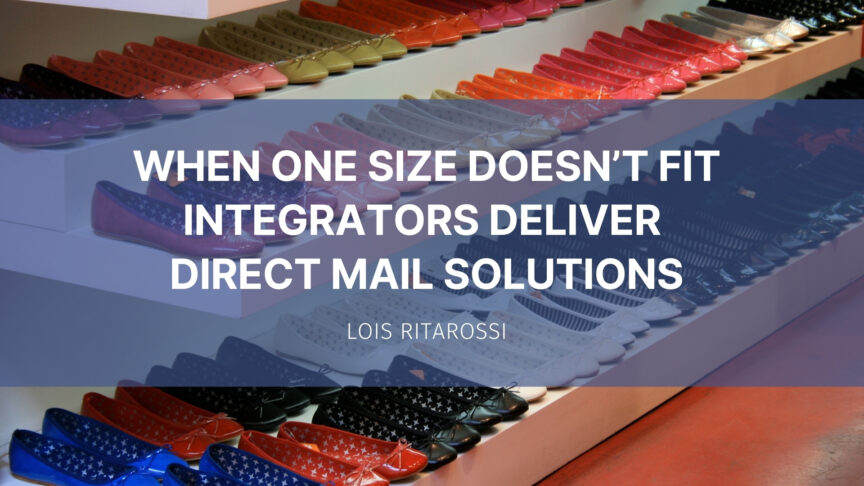Advancements in inkjet technologies have transformed how direct mail is produced. We’ve come a long way from generic direct mail addressed to “current resident.” In the 1970s and 1980s inkjet addressing systems were limited to text address blocks. They ran slowly and the resolution was very low.
Next-generation inkjet heads improved high-speed addressing and barcoding for matching, delivery and mail tracking. Further advances in inkjet heads and ink formulations enabled hybrid direct mail solutions with inkjet heads mounted over offset presses. This type of configuration still facilitates high speed variable data and versioning of direct mail content.
Production inkjet presses drove another wave of transformation. With complex data and full personalization, inkjet platforms replaced offset pre-printed shells. Direct mailers and transactional print service providers embraced inkjet and migrated to white paper factories running both cut sheet and rolls of paper. Several OEMs provide high quality web-fed inkjet platforms that have replaced significant offset volumes in direct mail and commercial print applications. Inkjet adoption continues to grow because of excellent, predictable quality, automation and improved time to market. Further inkjet advancements have improved finishing, post-printing on envelopes and overall throughput.
The National Postal Forum (NPF) included conference sessions and exhibitors demonstrating advancements in technology and solutions. Attendees came to learn about solutions for every aspect of mail from design, data and multi-channel delivery to complex manufacturing, tracking and inbound mail sorting. Several exhibitors provide customized and bespoke solutions for direct mail manufacturing. I spoke with several of these integrators on their approach for customized inkjet solutions.
When a single equipment solution does not meet the desired business and manufacturing needs for applications, it’s time to call an integrator. Integrators evaluate the various inkjet technology from piezo and thermal inkjet heads and ink formulations with water based, aqueous and UV ink to determine the best fit for customers’ applications. They often work with several partners and different equipment manufacturers to customize solutions for specific application needs to address flexibility, reliability and time to market.
You can read an introduction to inkjet integrators and the related market in this article by Ralf Schlozer. Inkjet integration specialists participating in the National Postal Forum this year included Capital Mailing Equipment, Kirk-Rudy, and Dpi.
Capital Mailing Equipment
Troy Shatus, CEO of Capital Mailing Equipment, leverages his many years of experience and his highly tenured team to deliver custom inkjet solutions for complex print mail manufacturing. Success starts with strong partnerships. Capital Mailing Equipment works with several OEMs and has 10 different inkjet heads to consider when building customer solutions. As integrators they put together the best options for base units, conveyors, feeding, ink jetting, and software integration for an engineered solution to meet application requirements.
Their approach involves evaluating volumes, finish size, ink coverage and substrate flexibility to develop solutions. Their mailing solutions involve configurations for printing and high speed automated finishing. One example is their partnership with Memjet leveraging the Durabolt engine to deliver what may be the fastest envelope printer on the market. Often, they are engaged to reengineer a production line to improve automation and speed. Their solutions leverage inkjet options with cameras, and barcodes, from multiple OEMs, to drive faster more efficient production with components. Their goal is to improve reliability, throughput and uptime. Capital Mailing Equipment’s customers are producing complex applications in direct mail, booklets, newspapers, and print manufacturing of greeting cards
Kirk-Rudy
Kirk-Rudy is a trusted integrator providing print, mail, fulfillment and packaging solutions. They are known for their modular design approach to deliver customized production solutions. At the NPF, they showcased their FireJet 4C solution. The solution includes Memjet’s DuraFlex technology, and the heavy-duty Kirk-Rudy transport. This press delivers production at speeds up to 150 ft./min at 1600 x 954 dpi. It provides vibrant quality for direct mail and packaging applications.
DPi
DPi’s president Bryan Bell demonstrated their solutions for high volume variable print. DPi offers flexibility to support 2.5 inch to 26 inch wide head configurations for direct mail applications. DPi has an excellent reputation, and trains end users to self-service and maintain their equipment. Their approach is providing production flexibility with one product line which can be retrofit for new applications to deliver speed and throughput. One of their key partners is Kyocera. DPi integrates the Kyocera Hawk M7 advanced print head in their solutions.
DPi’s customers are running high-speed solutions with coated stocks for mail and packaging. Customer configurations include web presses for labels and packaging for applications produced on corrugated, bags, and various rigid boards. DPi is known for their ability to understand data and minimize job setup time with flexibility for supporting spot colors. Customers value reliability and uptime. Capital Mailing Equipment is a dealer for DPi.
Changing Customer Needs
Integrators see increased demand for better substrate coverage. Many solutions are using UV heads which can print on most every substrate. Service providers are adapting to convergence between direct mail and packaging with production lines that can support a variety of applications, for poly bags, ID cards and self-mailers. Integrators see continued expansion of UV head applications which offer flexibility across substrates without the need for heat to dry water based and aqueous inks.
Partner or Perish
Partner or perish was the mantra at NPF. By partnering companies can capitalize on rapidly changing technology to deliver innovative product development. Known competitors forged new alliances to leverage existing technology and IP to bring products to market faster.
Inkjet innovations continue with the many announcements from drupa. Integrators see increased customer demands for hybrid and bespoke inkjet applications. In addition to the integrators I spoke with at the NPF, my colleague Ralf Schlözer has published a series of articles on inkjet integrators. His articles highlight the unique approaches to configurations and specialty inkjet applications from DJM, NEOS, Bergstein, and MCS.

